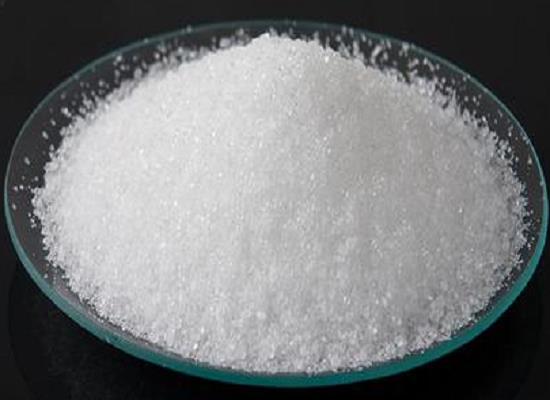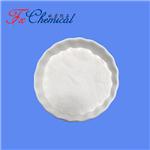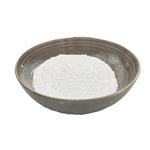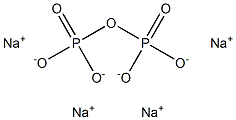Tetrasodium Pyrophosphate: Enhancing Nutrient Bioavailability and Protein Stability in the Food Industry
Jul 11,2024
General Description
Tetrasodium pyrophosphate plays a crucial role in enhancing iron absorption and myofibrillar protein stability in the food industry. In terms of iron fortification, Tetrasodium pyrophosphate forms soluble complexes with iron, significantly increasing its bioavailability from ferric pyrophosphate and improving its absorption rate in humans. Research shows a 46% boost in iron absorption when bouillon cubes are fortified with both FePP and Tetrasodium pyrophosphate. Additionally, Tetrasodium pyrophosphate acts as a protective agent against oxidative stress on myofibrillar proteins, enhancing their gelling properties and structural integrity. This dual functionality underscores Tetrasodium pyrophosphate's potential as a valuable additive in addressing nutrient deficiencies and preserving protein quality in processed foods.

Figure 1. Tetrasodium pyrophosphate
Enhancing Iron Absorption with Tetrasodium Pyrophosphate
Tetrasodium pyrophosphate is a chemical compound that serves various applications in the food industry and beyond. Primarily, it functions as an emulsifier, a buffering agent, and a stabilizer. However, its role extends into nutritional enhancements, particularly in the fortification of food products to combat micronutrient deficiencies. In developing countries, iron deficiency is a common problem, and Tetrasodium pyrophosphate's role in enhancing iron bioavailability from food products like bouillon cubes is critical. 1
Enhancing Iron Absorption
In the context of iron fortification, Tetrasodium pyrophosphate plays a pivotal role in increasing the bioavailability of iron from ferric pyrophosphate (FePP), a commonly used fortificant in foods. The interaction between TSPP and FePP is particularly important as it forms soluble complexes with iron, thereby enhancing iron's bioavailability. This is crucial because FePP alone has a low absorption rate in humans, which limits its effectiveness in addressing iron deficiency. By forming complexes with iron, Tetrasodium pyrophosphate transforms the iron into a form that is more easily absorbed by the human body, thus making iron supplementation more effective.
Clinical Study Insights
A study investigating the bioavailability of iron from bouillon cubes fortified with either FePP alone or in combination with Tetrasodium pyrophosphate provided significant insights. The results indicated a 46% increase in iron absorption from bouillon cubes fortified with both FePP and Tetrasodium pyrophosphate compared to those only containing FePP. This improvement is a testament to the effectiveness of Tetrasodium pyrophosphate in enhancing iron absorption. Further research could potentially expand the application of Tetrasodium pyrophosphate to other fortified foods, aiming to tackle iron deficiency more broadly, especially in complex food matrices found in various processed foods. This strategy holds promise for improving nutritional outcomes in populations most at risk of micronutrient deficiencies.
Enhancing Myofibrillar Protein Stability
Tetrasodium Pyrophosphate in Protein Preservation
Tetrasodium pyrophosphate plays a significant role in preserving the physicochemical properties of myofibrillar proteins under conditions of oxidative stress. In studies where porcine myofibrillar proteins are subjected to oxidative environments, Tetrasodium pyrophosphate has shown a protective effect against the damaging impacts of hydroxyl radicals. This enhancement is crucial for maintaining the functionality and structural integrity of proteins in food processing and storage.
Mitigating Oxidative Damage
The addition of Tetrasodium pyrophosphate helps mitigate the effects of oxidative stress induced by hydroxyl radicals. This stress, characterized by increased protein oxidation, can lead to the degradation of amino acid side chains and the aggregation of protein structures. Although Tetrasodium pyrophosphate's effectiveness in reducing lipid oxidation is well documented, its capacity to limit protein oxidation appears somewhat limited, particularly at higher concentrations of oxidative agents like hydrogen peroxide.
Improving Gelling Properties
Despite the mixed effects on protein oxidation, Tetrasodium pyrophosphate significantly enhances the gelling properties of myofibrillar proteins. Systems treated with TSPP not only show improved protein solubility but also exhibit more compact and orderly microstructures in the resultant protein gels. This structural enhancement leads to reduced cooking losses and stronger gel formations, vital for the textural quality of protein-based food products. The use of Tetrasodium pyrophosphate in such applications highlights its potential as a beneficial additive in the food industry, particularly in products subjected to oxidative conditions during processing. 2
Reference
1. Cercamondi CI, Duchateau GS, Harika RK, et al. Sodium pyrophosphate enhances iron bioavailability from bouillon cubes fortified with ferric pyrophosphate. Br J Nutr. 2016;116(3):496-503.
2. Cao Y, Ma W, Wang J, et al. Influence of sodium pyrophosphate on the physicochemical and gelling properties of myofibrillar proteins under hydroxyl radical-induced oxidative stress. Food Funct. 2020; 11(3): 1996-2004.
- Related articles
- Related Qustion
- Introduction of Tetrasodium pyrophosphate Apr 26, 2022
Tetrasodium pyrophosphate appears as odorless, white powder or granules. mp: 995°C. Density: 2.53 g/cm3. Solubility in water: 3.16 g/100 mL (cold water)
Paraffin wax's crystalline behavior affects pipelines and heat storage, enhanced by additives for efficiency in energy storage technologies.....
Jul 11,2024APIMyrcene, synthesized from geranyl diphosphate in plants and industrially from β-pinene via pyrolysis, plays key roles in fragrance and industrial applications.....
Jul 11,2024APITetrasodium pyrophosphate
7722-88-5You may like
Tetrasodium pyrophosphate manufacturers
- Tetrasodium pyrophosphate
-

- $0.00 / 1KG
- 2024-07-25
- CAS:7722-88-5
- Min. Order: 1KG
- Purity: 98%min
- Supply Ability: 30tons/month
- Tetrasodium pyrophosphate
-

- $2.60 / 1KG
- 2024-07-24
- CAS:7722-88-5
- Min. Order: 1KG
- Purity: 99.5%
- Supply Ability: 5000kg
- Tetrasodium pyrophosphate
-

- $0.00 / 1kg
- 2024-06-17
- CAS:7722-88-5
- Min. Order: 1kg
- Purity: 0.99
- Supply Ability: 50000kg




